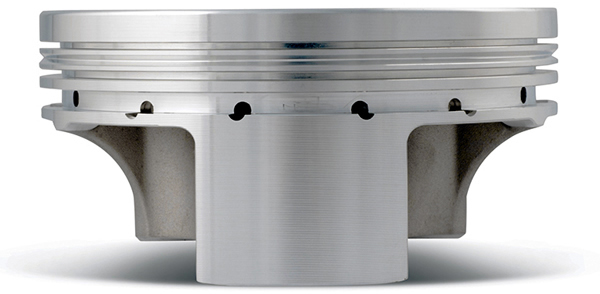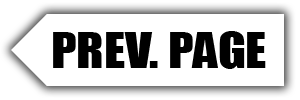In today’s hot rod and racing scene, nowhere has piston design
changed more than with JE’s radical asymmetrical forgings for GM’s
LS engines. They address disproportionate loads in the cylinder and
they’re the first of their kind.
Asymmetrical piston skirts differ in size — they have a thrust side and
a non-thrust side. As a result both friction and piston mass are
reduced compared with conventional forgings. They are also quieter
on cold starts, achieve near-perfect balance, generate more horsepower and, conveniently, are available off-the shelf. In these areas they excel.
JE’s motivation for the asymmetrical design derived from their observations and experience in ALMS and NASCAR competition. Data gained from these advanced engine programs prompted them to pioneer similar designs, chiefly for LS engines and particularly the high horsepower species that are often found in drag racing situations. .
Produced in 2618 aluminum alloy these new asymmetrical units are well-suited to naturally aspirated LS engines. But it’s in long-stroke applications, and perhaps more notably in forced-induction and nitrous motors producing up to 1,500hp and beyond, that JE report they have proved particularly useful.
To combat the heightened side loads the larger skirt is positioned on the major thrust side of the cylinder. It therefore follows the smaller skirt resides on the minor thrust side, which is free of undue weight and friction. Beyond this the piston configuration promotes lightness, strength, and durability because its unique design enables material to be distributed to the areas exposed to higher stresses.

Created in 2618 aluminum alloy, the larger skirt is placed toward the major thrust side of the cylinder—the right side when viewed from the flywheel end. Reductions in weight and friction are two key advantages of JE’s new asymmetrical pistons for LS engines.
Seizing advantage of reduced piston and piston pin mass
 |
| Compared with the piston’s major thrust skirt, the minor thrust skirt (shown here) encounters loadings up to 10 times less. Disparities in skirt loadings vary with engine stroke, rod length and cylinder pressure. |
The major weight reductions are achieved by employing 106-gram piston pins. Measuring 2.250 inches long these compare favorably with the pins of traditional full-round piston designs that measure 2.750in and weigh 130 grams. Developed from 5115 alloy steel they are produced with a wall thickness of 0.150in. However, greater wall thicknesses are available as well as upgraded materials to custom-tailor each combination. Pins and accompanying round wire locks are included in each piston kit.
Importantly, noisy cold starts, the effect of piston slap in the bores as the engine reaches operating temperature, are eliminated by moving the piston pin position slightly off-center. As the crank rotates, the offset pin preloads the major skirt face, thus reduces noise caused by the piston bouncing back and forth within the walls.


